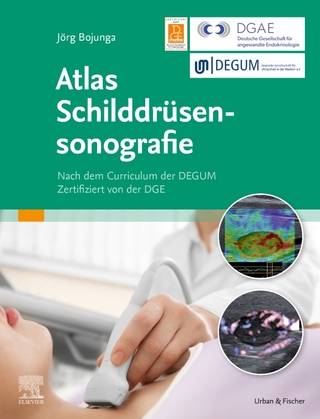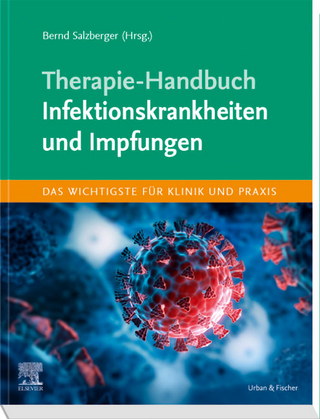
Clinical In Vitro Fertilization
Springer London Ltd (Verlag)
978-1-4471-1666-0 (ISBN)
In vitro fertilization has resulted in an estimated 4000-5000 births in the world. The procedure has been accepted in Europe, America and Australia and several hundred IVF clinics are operating successfully. The newer procedures of GIFf, embryo freezing and donor oocyte IVF have become established and are dealt with in several chapters. GIFf has become the procedure of choice for patients with infertility of unknown origin. Oocyte freezing represents an important new technology which is being developed. The routine IVF procedure has improved slightly; variation in results can be reduced by quality control of laboratory and clinical techniques. Male factor infertility has been dealt with by IVF in mild and moderate cases, but newer techniques will be required to deal with severe problems in the male. Most countries have accepted that the straightforward IVF pro cedure is ethical. Limitations concerning the use of donor oocytes and embryo experimentation exist in some religions and countries; legal control of the new reproductive technologies ranges from the passage of statutes to no control at all. Many countries are still considering the need for legislative control. The text endeavours to indicate new areas of importance and to guide those organizing services as to how to introduce newer technolo gies.
1 Selection and Preparation of Patients for In Vitro Fertilization.- 1.1 Introduction.- 1.2 The Waiting List.- 1.3 Length of Menstrual Cycles — Confidence Limits.- 1.4 Hormonal Assessment.- 1.5 Assessment of Semen.- 1.6 Serological Assessment.- 1.7 Bacteriological Assessment of the Cervix.- 1.8 Assessment of the Pelvis Prior to Treatment.- 1.9 Consent Forms.- 1.10 Psychological Preparation.- 1.11 Patient Support Group.- 2 Patient Management.- 2.1 Introduction.- 2.2 Natural Folliculogenesis.- 2.3 Stimulated Follicular Development.- 2.4 Conclusion.- 3 Oocyte Pick-up.- 3.1 Introduction.- 3.2 Laparoscopic Method.- 3.3 Ultrasound-Guided Techniques.- 3.4 Ultrasound-Guided Technique Using a Combined Vaginal Needle and Transducer.- 3.5 Results.- 3.6 Conclusions.- 4 Fertilization and Embryo Culture.- 4.1 Introduction.- 4.2 Quality Control of Laboratory Procedures.- 4.3 Media for Insemination of Eggs and Culture of Embryos.- 4.4 Culture Conditions and Methods.- 4.5 Evaluation of Eggs.- 4.6 Insemination of Eggs.- 4.7 Microfertilization Techniques.- 4.8 Evaluation of the Fertilization Process.- 4.9 Evaluation of Embryos.- 4.10 Conclusions.- 5 Results from In Vitro Fertilization.- 5.1 The Evaluation of Results H. W. Jones Jr.- 5.2 Results P. A. W. Rogers.- 6 Gamete Intra-fallopian Transfe.- 6.1 History.- 6.2 Gamete Preparation.- 6.3 Gamete Transfer.- 6.4 Results.- 6.5 Complications.- 7 Outcome of Pregnancy.- 7.1 Introduction.- 7.2 Characteristics of Infertile Couples.- 7.3 Overall Results of IVF Pregnancies.- 7.4 Early Pregnancy Losses.- 7.5 Viable Pregnancies.- 7.6 Infants Born after In Vitro Fertilization.- 7.7 Conclusions.- 8 Andrology, Male Factor Infertility and IVF.- 8.1 Introduction.- 8.2 Assessment of the Male.- 8.3 Separation of Motile Sperm.- 8.4 Male FactorInfertility.- 9 Oocyte Freezing.- 9.1 Introduction.- 9.2 The Human Oocyte.- 9.3 Feasibility of Oocyte Cryopreservation.- 9.4 Cryobiological Concepts in Oocyte Cryopreservation.- 9.5 Developing Oocyte Freezing Using an Animal Model.- 9.6 Establishing Human Oocyte Freezing.- 9.7 Factors Influencing Successful Freezing.- 9.8 Results of Human Oocyte Cryopreservation.- 9.9 Discussion.- 10 Embryo Cryopreservation.- 10.1 Introduction.- 10.2 Requirements for Embryo Freezing.- 10.3 Development of Slow Cooling Methods for Cryopreserving Human Embryos.- 10.4 Methods of Cryopreservation by Slow Cooling.- 10.5 Success of Cryopreservation by Slow Cooling.- 10.6 The Development of Rapid Cooling Methods for Cryopreservation.- 10.7 Use of Rapid Freezing Methods for Cryopreservation of Human Embryos.- 10.8 Cryopreservation of Embryos and Unfertilized Oocytes.- 10.9 Conclusion.- 11 Oocyte Donation.- 11.1 Introduction.- 11.2 Indications for Donor Oocytes.- 11.3 Clinical Management.- 11.4 Source of Donor Oocytes.- 11.5 Steroid Replacement Therapy.- 11.6 Uterine Receptivity for Implantation.- 11.7 Endocrinology of Pregnancy.- 11.8 Legal Aspects.- 12 Infertility Counselling.- 12.1 Introduction.- 12.2 Why Would Anyone Seek or Need Specialised Infertility Counselling.- 12.3 Is Counselling Synonymous with “Assessment”.- 12.4 Who Does the Counselling.- 12.5 What Are Common Expressions Indicating Consideration of a Counselling Referral.- 12.6 When is Infertility Counselling Appropriate.- 12.7 Should Counselling Be Compulsory for All Couples Seeking IVF.- 12.8 Are There Particular Treatment Options Necessitating Prior Counselling.- 12.9 What Are the Particular Issues a Counsellor Would Discuss with Couples Contemplating the Use of Donor Gametes.- 12.10 What is the Counselling Role of SupportGroups.
| Zusatzinfo | XVI, 166 p. |
|---|---|
| Verlagsort | England |
| Sprache | englisch |
| Maße | 170 x 244 mm |
| Themenwelt | Medizin / Pharmazie ► Gesundheitsfachberufe ► Hebamme / Entbindungspfleger |
| Medizin / Pharmazie ► Medizinische Fachgebiete ► Gynäkologie / Geburtshilfe | |
| Medizinische Fachgebiete ► Innere Medizin ► Endokrinologie | |
| Medizin / Pharmazie ► Medizinische Fachgebiete ► Pädiatrie | |
| Studium ► 1. Studienabschnitt (Vorklinik) ► Biochemie / Molekularbiologie | |
| Schlagworte | Künstliche Befruchtung • Wood |
| ISBN-10 | 1-4471-1666-6 / 1447116666 |
| ISBN-13 | 978-1-4471-1666-0 / 9781447116660 |
| Zustand | Neuware |
| Haben Sie eine Frage zum Produkt? |
aus dem Bereich


